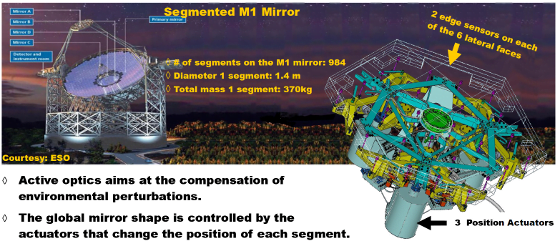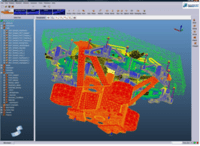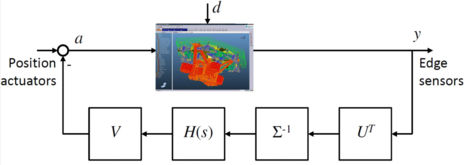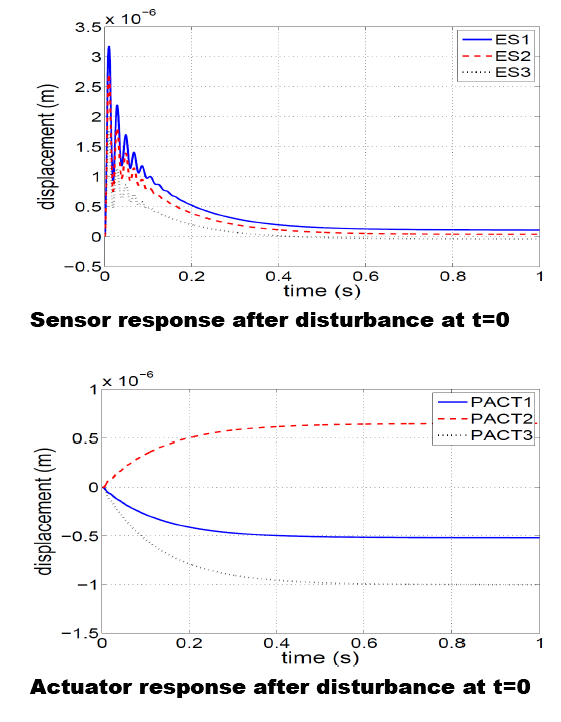Position Control of a Segment of the E-ELT

Introduction
The application shows how to use a multiphysics software solution to perform an integrated simulation of multiphysics controlled systems. In this particular case, a control loop is implemented with 12 sensors to drive the position of 3 piezoelectric actuators.
E-ELT main structure
The E-ELT will be the largest optical/near-infrared telescope in the world and will thus gather much more light than the largest optical telescopes existing today. It will be able to correct for the atmospheric distortions (i.e., fully adaptive and diffraction-limited) from the start, providing images 16 times sharper than those from the Hubble Space Telescope.
The E-ELT is a 40-m class, fully steerable telescope, with integrated wavefront control. The optics are mounted on an altitude azimuth telescope main structure, with two massive cradles for the elevation motions and azimuth tracks. The main structure weighs approximately 2800 tons.
The primary mirror is composed of 984 hexagonal segments. The motion of each segment is controlled individually using 3 position actuators which act perpendicularly to the mirror surface. Edge-sensors are used to measure the relative motion between adjacent segments. An important difficulty for the control design comes from the highly distributed nature of the actuators and sensors.
This study focuses on a single segment of the primary mirror of the E-ELT. It aims at analyzing the interactions between the complex structure of the segment and the controller response.
FEM model of the segment

The model has been elaborated based on a CAD file defining the segment geometry and on technical reports from ESO that describe the behavior and physical properties of the segment components as well as their interactions.

The M1 controller aims at compensating disturbances on the global shape of the mirror based on a feedback of the edge sensors displacements. In the model, this system is described in the finite element simulation package as a block diagram model in state-space form.

The curves show the response of the first three edge sensors (ES) and of the three position actuators (PACT). Transient vibrations are observed at the beginning of the simulation and are then damped out due to the presence of structural damping in the system. Then, the integral control system manages to reduce significantly the amplitude of the displacements at the edge sensors.
